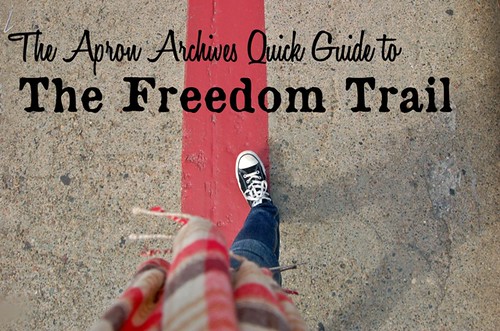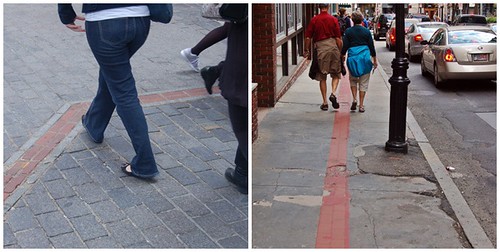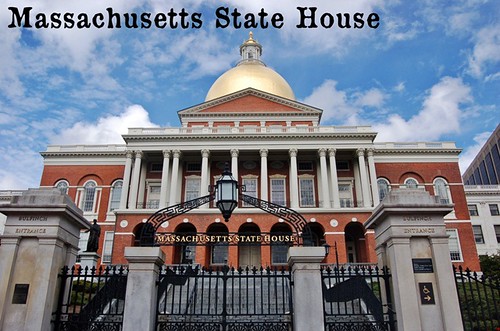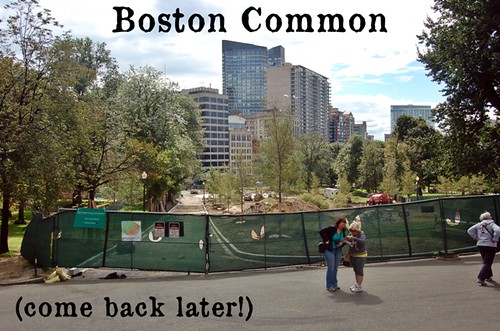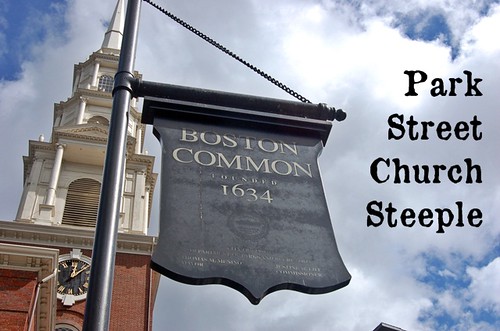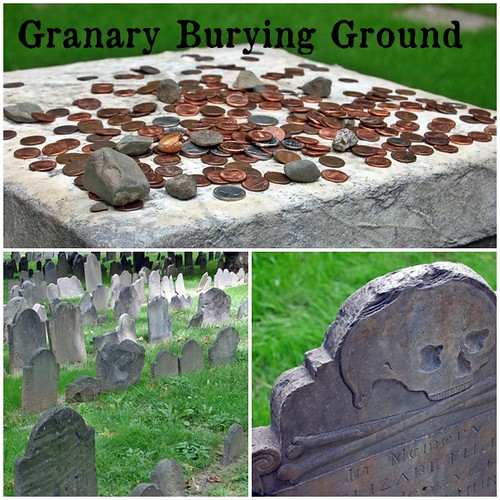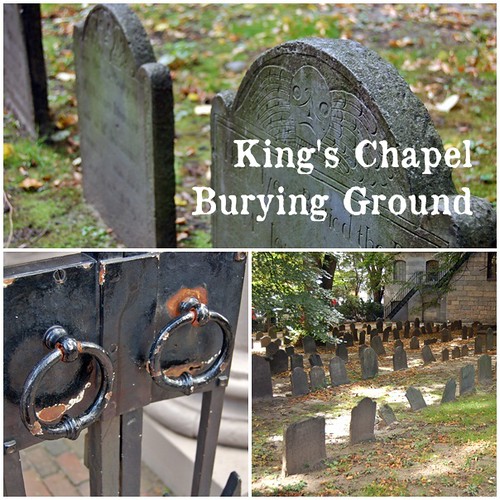The Freedom Trail is a winding path that runs through downtown Boston and encompasses 16 major historical sites. Spanning 2.5 miles from Boston Common to Bunker Hill Monument in Charlestown, the trail passes through busy city streets, around several peaceful graveyards, over the Charles River, and aboard the USS Constitution. For a history nerd like myself, it’s the perfect way to spend a gorgeous Boston afternoon.
On a recent picture-perfect early fall day in New England, I decided to grab my camera and walk the trail from start to finish, purely for fun, meaning I made the briefest stop at each site. I didn’t do any special tours or walk around with a headset guide. This is the Freedom Trail, resident-style. Are you ready to come along?
When it comes to the American history, and in particular the American Revolution, Boston has plenty to brag about – and it does. The Freedom Trail is a great way to see a large variety of Boston’s historical sites while offering plenty of opportunities to relax, eat, take photos, and truly immerse yourself in the spirit of our colorful city.
For those that like a bit of back story, we have local journalist William Schofield to thank for the Freedom Trail. In 1951 he began asking for a pedestrian-friendly method for visitors to experience many of Boston’s historical landmarks. Mayor John Hynes agreed, and by 1953, the Freedom Trail was welcoming thousands of visitors each year.
Some of the sites charge a small fee for admittance, while others ask for donations, or are free, but you needn’t spend a penny to earn a wonderful day on the Freedom Trail. Actually, if you do have a penny, I suggest saving it for Paul Revere’s gravesite monument (which serves as a makeshift patriotic penny donation site), and if you’ve got more than pennies to spend, you’d be wise to put them towards a delicious lunch while on the trail.
The trail is marked with a red line and occasional ornate and descriptive markers, either in the ground, or on sign posts. The red line is sometimes painted, sometimes made of brick, sometimes bright and bold, and sometimes faint and worn, but like a blood vessel, it’s always there.
I started on the steps of the Massachusetts State House, its gold dome gleaming in the September sunshine. Designed by Charles Bulfinch and completed in 1798, the State House sits at the edge of historic Beacon Hill and looks down over Boston Common.
From the State House, take the steps down and cross over into Boston Common, the oldest park in the country. The edge I strolled through wasn’t looking so lovely thanks to construction, but I am sure many of its other 50 acres were beautiful.
Stay straight and you will reach the opening to the Park Street MBTA Station, and on your left you will look up and see the 217-foot steeple of Park Street Church. The church was built in Boston in 1809 and was the site of important anti-slavery speeches during its early history.
Alongside Park Street Church is the Granary Burying Ground, the first of the Freedom Trail’s burial sites. It is the final resting place for many notable Boston revolutionaries, including the victims of the Boston Massacre, Peter Faneuil, John Hancock, the parents of Benjamin Franklin, and Paul Revere.
Separated from Tremont Street by a wrought iron fence, the shaded cemetery is crossed with walking paths to encourage visitors to keep off the grass and away from the fragile stones. Revere’s gravesite in particular is commemorated with a chest-high monument; its top covered with a scattering of coins and rocks.
While there are 2,300 stones in the cemetery, it actually contains an estimated 5,000 bodies. Headstones were pricey, so family members were buried in the same grave.
The next stop, just a few steps down the street, is King’s Chapel. Dating back to 1754, the Georgian Era chapel is still in use today as a place of worship. Its adjoining Burying Ground is another peaceful spot to wander among the faded and beautiful headstones.
Up next is the Old City Hall on School Street, with its statue of Benjamin Franklin. Completed in 1865, the building served as City Hall until 1969. The site is also the location of Boston Latin School, the nation’s first public school. It was founded in 1635, and still exists today in the city’s Fenway neighborhood.
Boston’s Old City Hall is beautiful, and I am sure many a newly minted bride and groom made for a pretty picture as they stumbled through its doors into the sunlight. Unfortunately, this cannot be said for the city’s current City Hall, which has repeatedly been voted one of the nations, and even the world’s, ugliest buildings. Sigh.
Moving onto our last stop in Part 1 of my Freedom Trail Quick Guide…
The site known as “The Old Corner Bookstore” on the corner of Washington and School streets was originally constructed in 1712. It became a literary hotspot in the mid-1800s when it was home to Ticknor and Fields Publishing House, and frequent visitors included Thoreau, Longfellow, Hawthorne, Dickens, and Emerson.
Over the years it remained in the hands of publishers and booksellers, and was saved from demolition when it was purchased by Historic Boston in 1960. The site took an odd turn in 2005 when it became home to a jewelry store, but has been vacant since the jewelry store left in 2009.
Well, it was vacant. On the day of my walk, I noticed something new was about to open…a little something called Chipotle Mexican Grille.
Don’t get me wrong, I love their burrito bowls, but I don’t think the walls of the great Old Corner Bookstore should smell like refried beans or carne asada. It’s just not right…
Then again, the site is within a stone’s throw of the now bankrupt and belly-up Borders Books, and the one of the spookiest statues in Boston, the Irish Famine Statue, so maybe Chipotle will be right at home.
Alright friends, stay tuned for Part 2 – I promise it will include a lot more culinary mentions!

